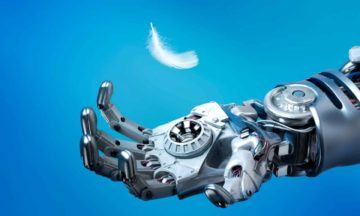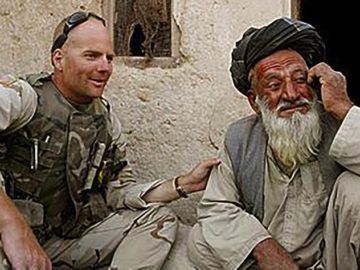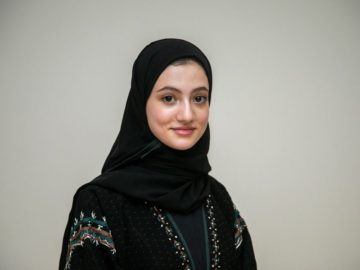Rachel Nuwer in Undark:
 I was once challenged by a friend to explain why it matters if species go extinct. Flustered, I launched into a rambling monologue about the intrinsic value of life and the importance of biodiversity for creating functioning ecosystems that ultimately prop up human economies. I don’t remember what my friend said; he certainly didn’t declare himself a born-again conservationist on the spot. But I do remember feeling frustrated that, in my inability to articulate a specific reason, I had somehow let down not only myself, but the entire planet.
I was once challenged by a friend to explain why it matters if species go extinct. Flustered, I launched into a rambling monologue about the intrinsic value of life and the importance of biodiversity for creating functioning ecosystems that ultimately prop up human economies. I don’t remember what my friend said; he certainly didn’t declare himself a born-again conservationist on the spot. But I do remember feeling frustrated that, in my inability to articulate a specific reason, I had somehow let down not only myself, but the entire planet.
The conversation would have gone very differently had I already read environmental journalist Emma Marris’s “Wild Souls: Freedom and Flourishing in the Non-Human World,” a razor-sharp exploration of the worth of wild animals and the species they belong to, and the responsibility we have toward them. “I wanted to know whether the massive human impact on Earth changes our obligation to animals,” Marris writes. “Our emotions about animals have always been strong, but are our intuitions about how — and whether — to interact with them still correct?”
More here.

 Shortly before he died in 2007, the celebrated American novelist, iconoclast and second world war veteran Kurt Vonnegut gave a final interview. “My country is in ruins,” he said. “I’m a fish in a poisoned fishbowl.” Vonnegut was 84, and sounded razor sharp as he spoke about inequality and political shortsightedness, adding that in the history of the United States “one thing that no cabinet has ever had is a Secretary of the Future, and there are no plans at all for my children and grandchildren.”
Shortly before he died in 2007, the celebrated American novelist, iconoclast and second world war veteran Kurt Vonnegut gave a final interview. “My country is in ruins,” he said. “I’m a fish in a poisoned fishbowl.” Vonnegut was 84, and sounded razor sharp as he spoke about inequality and political shortsightedness, adding that in the history of the United States “one thing that no cabinet has ever had is a Secretary of the Future, and there are no plans at all for my children and grandchildren.” Throughout the pandemic, new surveillance systems—used by landlords, educational institutions, and employers—have converged, capturing new forms of data and exerting new forms of control in domestic spaces. COVID-19 prompted bosses and schools to accelerate the deployment of surveillance and tracking systems. As the pandemic drags on, many are still monitoring and assessing remote learners and workers in their most intimate environments. Landlords, meanwhile, took the pandemic as a time to promise “touchless” convenience and increased control over the homes of their tenants, rushing to install tracking systems in renters’ homes. Whatever the marketing promises, ultimately landlords’, bosses’, and schools’ intrusion of surveillance technologies into the home extends the carceral state into domestic spaces. In doing so, it also reveals the mutability of surveillance and assessment technologies, and the way the same systems can play many roles, while ultimately serving the powerful.
Throughout the pandemic, new surveillance systems—used by landlords, educational institutions, and employers—have converged, capturing new forms of data and exerting new forms of control in domestic spaces. COVID-19 prompted bosses and schools to accelerate the deployment of surveillance and tracking systems. As the pandemic drags on, many are still monitoring and assessing remote learners and workers in their most intimate environments. Landlords, meanwhile, took the pandemic as a time to promise “touchless” convenience and increased control over the homes of their tenants, rushing to install tracking systems in renters’ homes. Whatever the marketing promises, ultimately landlords’, bosses’, and schools’ intrusion of surveillance technologies into the home extends the carceral state into domestic spaces. In doing so, it also reveals the mutability of surveillance and assessment technologies, and the way the same systems can play many roles, while ultimately serving the powerful. On a recent afternoon, the comedian Jaboukie Young-White walked into Syndicated, a bar and movie theatre in Bushwick. He had bleach-blond hair and the beginnings of a mustache, and he wore workout clothes. “I like to exercise, but ‘I want to look plump and juicy’ isn’t enough motivation,” he said. “I need more of a narrative.” He had reserved a spot in a Muay Thai class nearby, but the class had been cancelled because of a sudden rainstorm. The gym’s owner texted him a video, and Young-White held up his phone: floor mats covered in gushing water. “Life during climate change, I guess,” he said, sliding into a booth. Two movie projectors beamed images onto a wall—“Fitzcarraldo,” the Werner Herzog film, next to “Whenever, Wherever,” the Shakira video. “Every bar should have this,” Young-White said. “If you’re on a first date and things get super awkward, you can at least look up and comment on something together, instead of each disappearing into your phones.”
On a recent afternoon, the comedian Jaboukie Young-White walked into Syndicated, a bar and movie theatre in Bushwick. He had bleach-blond hair and the beginnings of a mustache, and he wore workout clothes. “I like to exercise, but ‘I want to look plump and juicy’ isn’t enough motivation,” he said. “I need more of a narrative.” He had reserved a spot in a Muay Thai class nearby, but the class had been cancelled because of a sudden rainstorm. The gym’s owner texted him a video, and Young-White held up his phone: floor mats covered in gushing water. “Life during climate change, I guess,” he said, sliding into a booth. Two movie projectors beamed images onto a wall—“Fitzcarraldo,” the Werner Herzog film, next to “Whenever, Wherever,” the Shakira video. “Every bar should have this,” Young-White said. “If you’re on a first date and things get super awkward, you can at least look up and comment on something together, instead of each disappearing into your phones.” The case at hand that prevents me from an unqualified rooting for the category of “experience,” is the exemplary case of Malala Yousafzai of Pakistan, who has traversed the distance from female “experience” to feminist “expertise”, and who, like others before (and since) that have made that journey from the “margins” to the “center” of imperial power, has now switched from being a “voice of the oppressed” to becoming an “expert” who can speak to us and teach us about those authentic “other” women in the global south—in this case, Afghan women– to whom her prior proximity (“experience”)– renders her an “expert” on today. From experience to expertise then, is a pretty straightforward line, following the predictable path forged also by white feminism in thrall and service to imperial designs past and present. This is the path that was announced with great fanfare shortly after 9/11 by First Lady Laura Bush and enthusiastically supported by the Feminist Majority Foundation, that would “save brown women from brown men” by going in to the “backward” country of Afghanistan overrun by crazy “Moslem” men, in the process unleashing a 20-year war on the population that had had nothing to do with 9/11. The initial military intervention was then followed up over the next two decades with countless “development” schemes that enriched a few at the expense of the many, and when the cost of this unending war became unpopular with the citizenry “back home” in the USA over time—we left the hapless “natives” that included those very women we had been so concerned with “saving,” at the mercy of anarchy and chaos.
The case at hand that prevents me from an unqualified rooting for the category of “experience,” is the exemplary case of Malala Yousafzai of Pakistan, who has traversed the distance from female “experience” to feminist “expertise”, and who, like others before (and since) that have made that journey from the “margins” to the “center” of imperial power, has now switched from being a “voice of the oppressed” to becoming an “expert” who can speak to us and teach us about those authentic “other” women in the global south—in this case, Afghan women– to whom her prior proximity (“experience”)– renders her an “expert” on today. From experience to expertise then, is a pretty straightforward line, following the predictable path forged also by white feminism in thrall and service to imperial designs past and present. This is the path that was announced with great fanfare shortly after 9/11 by First Lady Laura Bush and enthusiastically supported by the Feminist Majority Foundation, that would “save brown women from brown men” by going in to the “backward” country of Afghanistan overrun by crazy “Moslem” men, in the process unleashing a 20-year war on the population that had had nothing to do with 9/11. The initial military intervention was then followed up over the next two decades with countless “development” schemes that enriched a few at the expense of the many, and when the cost of this unending war became unpopular with the citizenry “back home” in the USA over time—we left the hapless “natives” that included those very women we had been so concerned with “saving,” at the mercy of anarchy and chaos. Aditi Sahasrabuddhe in Phenomenal World (Photo by
Aditi Sahasrabuddhe in Phenomenal World (Photo by  Gernot Wagner in Bloomberg (Photo by
Gernot Wagner in Bloomberg (Photo by  Liza Batkin in the NY Review of Books:
Liza Batkin in the NY Review of Books: Early in Werner Herzog’s 1974 documentary The Great Ecstasy of the Woodcarver Steiner, we find its subject, a champion “ski-flier,” in the studio where he works as an amateur woodcarver. Brushing his hand over a tree stump, Walter Steiner describes the forms his chisel will release: “I saw this bowl here, the way the shape recedes, it’s as if an explosion had happened, and the force cannot escape properly and is caught up everywhere.” Trapped force is not to be the film’s subject. Rather, its subject is fear—or, as Steiner calls it, “respect for the conditions.” From the ski-jump at Planica, Slovenia, he leaps out of his own imagination and into Herzog’s. Steiner’s coyness serves his strangely sober ecstasy. His afterimage haunts another work of creative documentation, composed at roughly the same time, some five hundred kilometers to the northeast. The Gentle Barbarian, Czech novelist Bohumil Hrabal’s memoir of his friendship with the painter and printmaker Vladimír Boudnik, depicts life as a more reckless leap of faith—one that lands not in the hands of God, but in a tightening rope.
Early in Werner Herzog’s 1974 documentary The Great Ecstasy of the Woodcarver Steiner, we find its subject, a champion “ski-flier,” in the studio where he works as an amateur woodcarver. Brushing his hand over a tree stump, Walter Steiner describes the forms his chisel will release: “I saw this bowl here, the way the shape recedes, it’s as if an explosion had happened, and the force cannot escape properly and is caught up everywhere.” Trapped force is not to be the film’s subject. Rather, its subject is fear—or, as Steiner calls it, “respect for the conditions.” From the ski-jump at Planica, Slovenia, he leaps out of his own imagination and into Herzog’s. Steiner’s coyness serves his strangely sober ecstasy. His afterimage haunts another work of creative documentation, composed at roughly the same time, some five hundred kilometers to the northeast. The Gentle Barbarian, Czech novelist Bohumil Hrabal’s memoir of his friendship with the painter and printmaker Vladimír Boudnik, depicts life as a more reckless leap of faith—one that lands not in the hands of God, but in a tightening rope. “It’s impossible to read about Simone de Beauvoir’s life without thinking of your own,” the biographer Hazel Rowley wrote in her foreword to the English translation of Beauvoir’s “Memoirs of a Dutiful Daughter.” How did the image of this turbaned Frenchwoman in a severe, 1940s-style suit, sitting beside Jean-Paul Sartre at a table in the Cafe de Flore or La Coupole and writing all day long, become the avatar of a generation?
“It’s impossible to read about Simone de Beauvoir’s life without thinking of your own,” the biographer Hazel Rowley wrote in her foreword to the English translation of Beauvoir’s “Memoirs of a Dutiful Daughter.” How did the image of this turbaned Frenchwoman in a severe, 1940s-style suit, sitting beside Jean-Paul Sartre at a table in the Cafe de Flore or La Coupole and writing all day long, become the avatar of a generation? AFGHANISTAN MAY NOT BE A NATION
AFGHANISTAN MAY NOT BE A NATION At one point last year, high schooler Rasha Alqahtani had finals coming up and 35 Zoom calls booked. To manage her busy schedule, she had duplicate calendars—one on Google Calendar, the other printed and placed behind her laptop, so that even a power outage wouldn’t derail her. The now-18-year-old from Riyadh, Saudi Arabia, had laser-like focus on an extracurricular passion project: Creating a video-game tool to help diagnose teenagers with generalized anxiety disorder.
At one point last year, high schooler Rasha Alqahtani had finals coming up and 35 Zoom calls booked. To manage her busy schedule, she had duplicate calendars—one on Google Calendar, the other printed and placed behind her laptop, so that even a power outage wouldn’t derail her. The now-18-year-old from Riyadh, Saudi Arabia, had laser-like focus on an extracurricular passion project: Creating a video-game tool to help diagnose teenagers with generalized anxiety disorder.